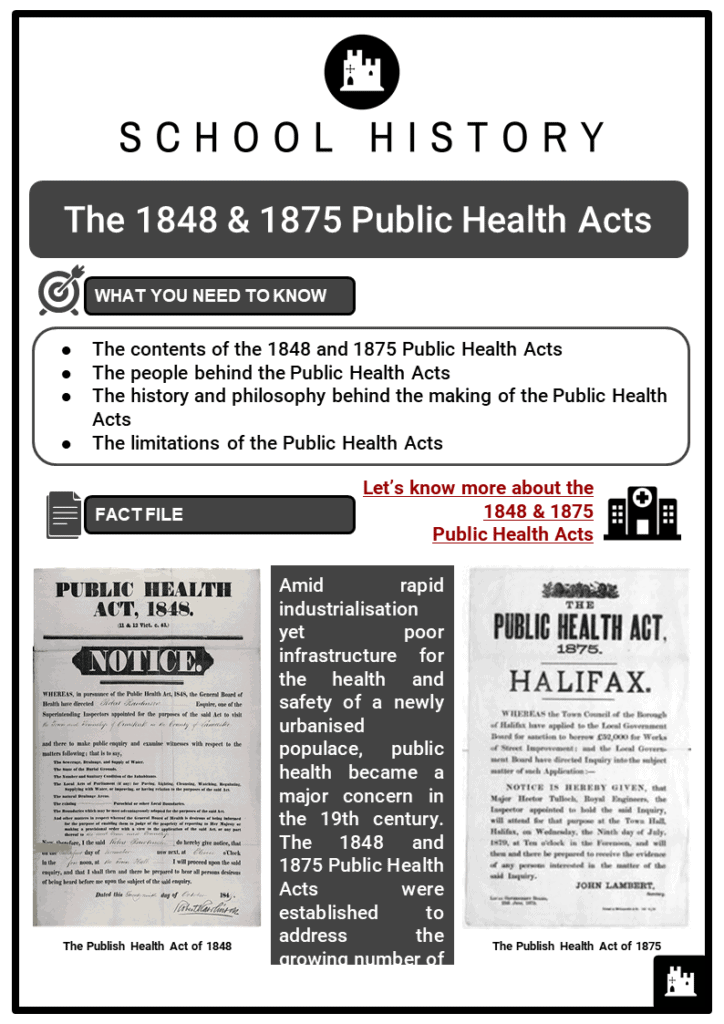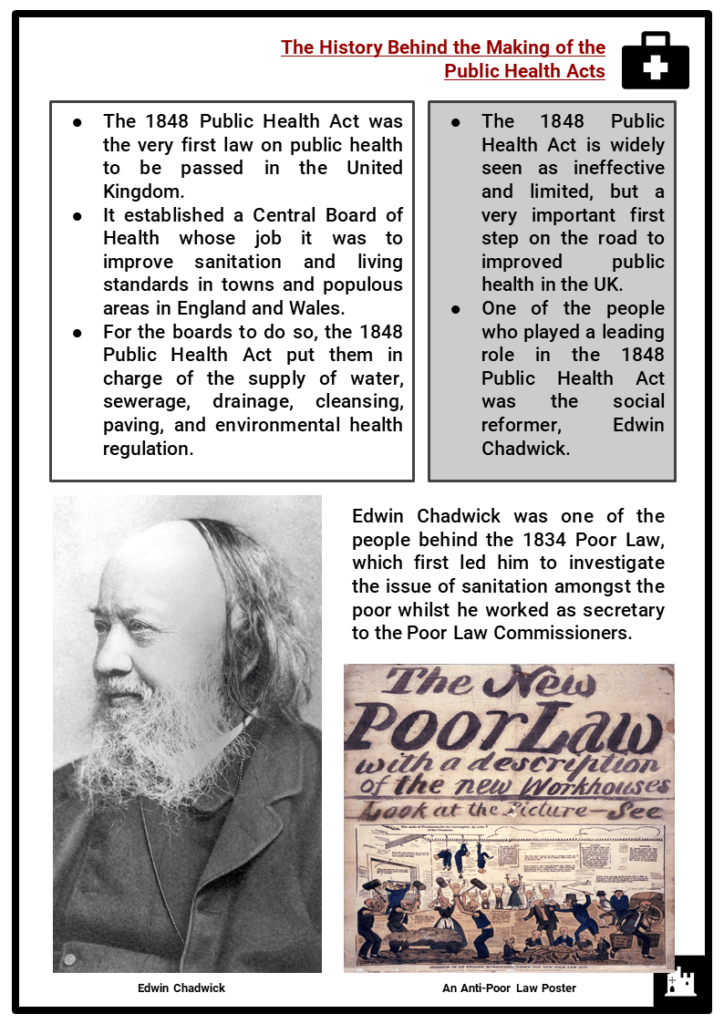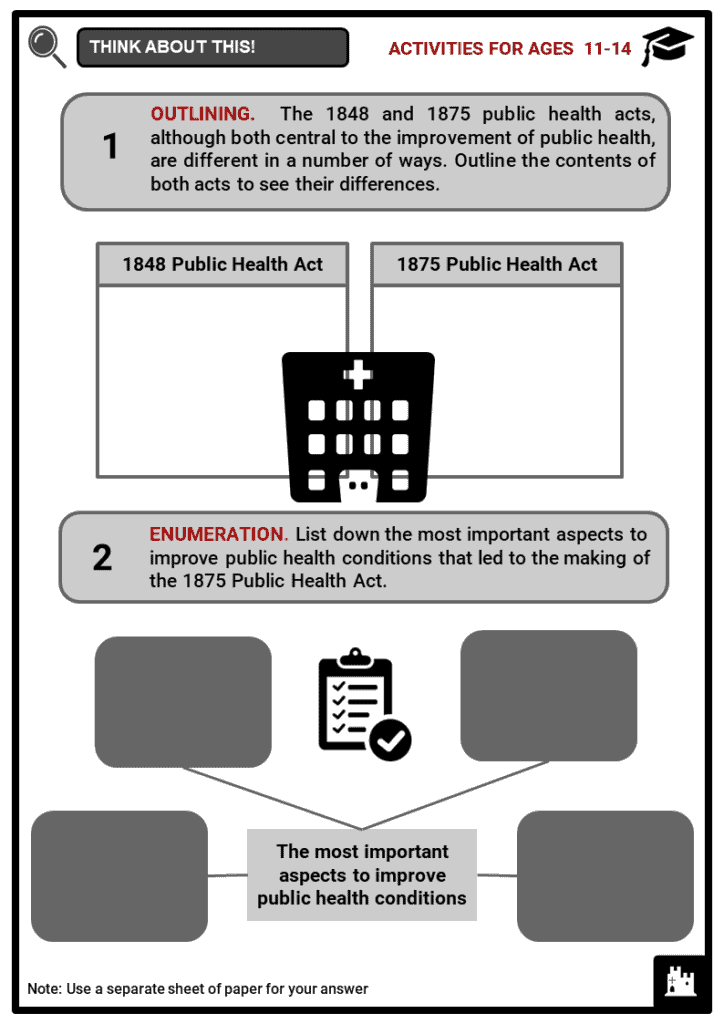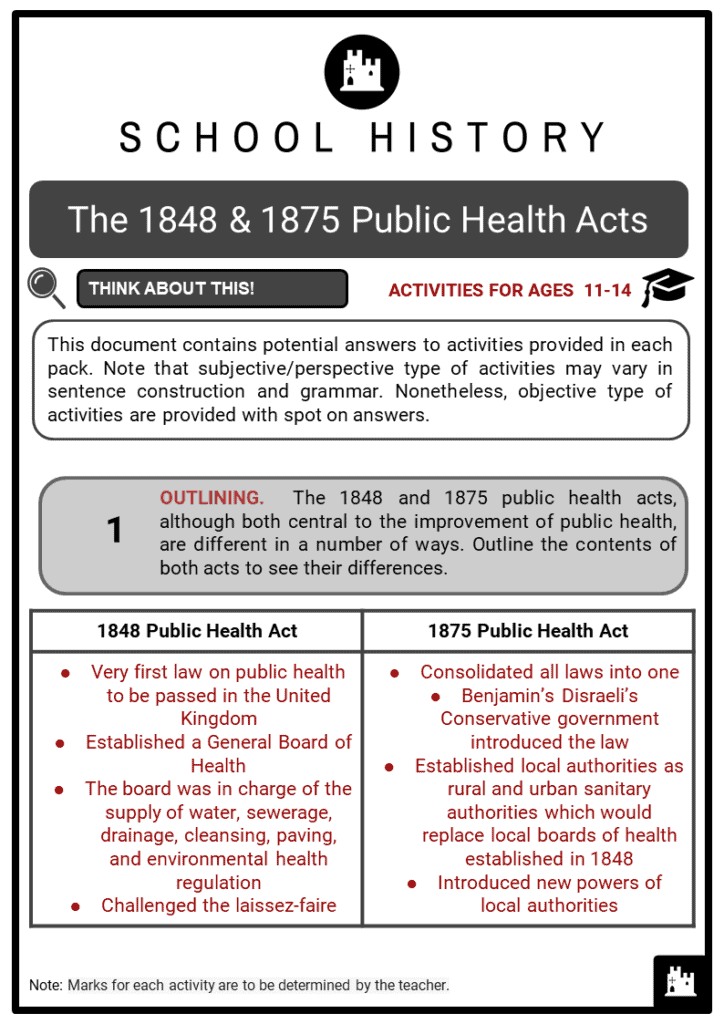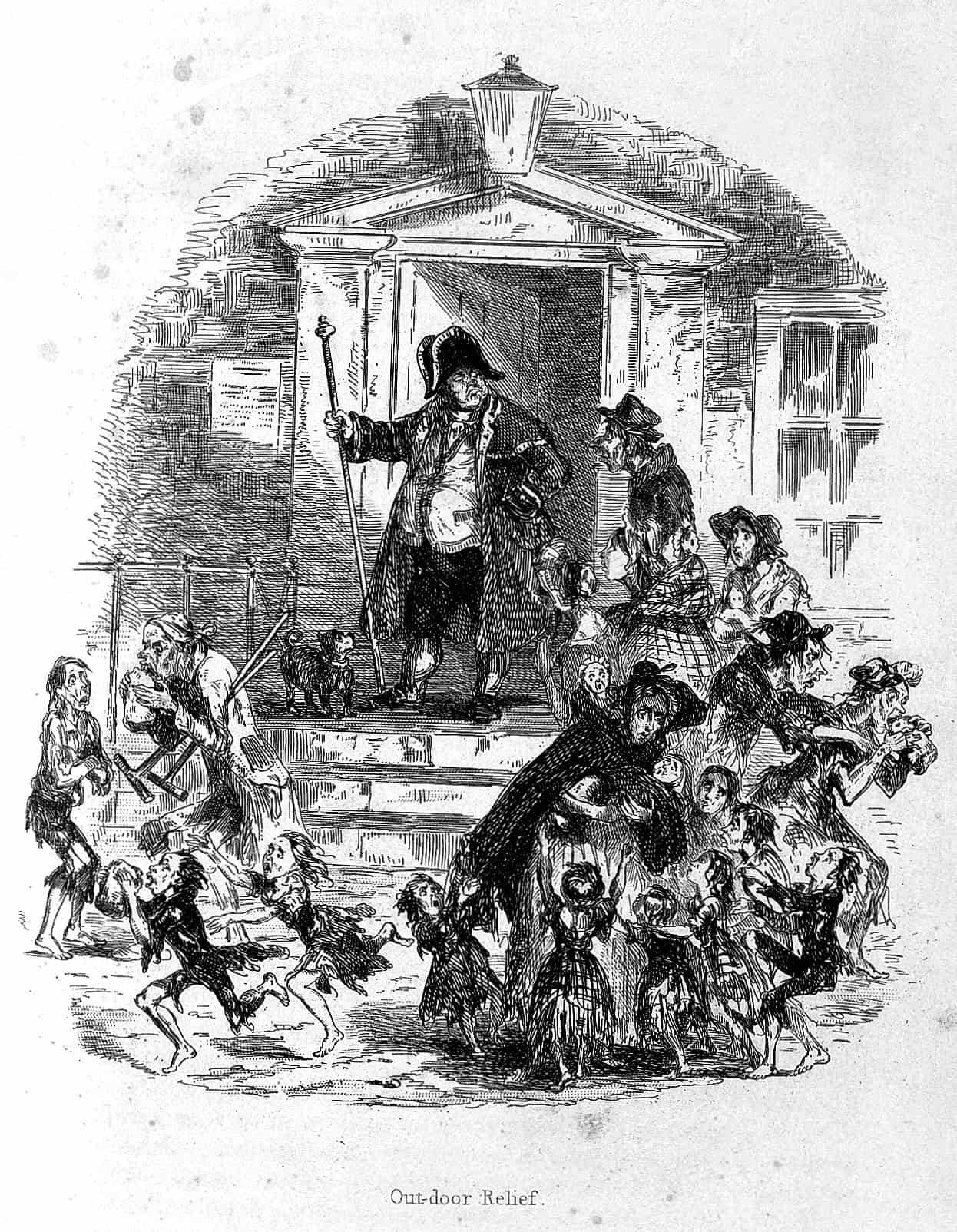Download The 1848-1875 Public Health Acts Worksheets
Do you want to save dozens of hours in time? Get your evenings and weekends back? Be able to teach The 1848-1875 Public Health Acts to your students?
Our worksheet bundle includes a fact file and printable worksheets and student activities. Perfect for both the classroom and homeschooling!
Table of Contents
Add a header to begin generating the table of contents
Summary
- The contents of the 1848 and 1875 Public Health Acts
- The people behind the Public Health Acts
- The history and philosophy behind the making of the Public Health Acts
- The limitations of the Public Health Acts
Key Facts And Information
Let’s know more about the 1848 & 1875 Public Health Acts
- Amid rapid industrialisation yet poor infrastructure for the health and safety of a newly urbanised populace, public health became a major concern in the 19th century. The 1848 and 1875 Public Health Acts were established to address the growing number of concerns.
The History Behind the Making of the Public Health Acts
- The 1848 Public Health Act was the very first law on public health to be passed in the United Kingdom.
- It established a Central Board of Health whose job it was to improve sanitation and living standards in towns and populous areas in England and Wales.
- For the boards to do so, the 1848 Public Health Act put them in charge of the supply of water, sewerage, drainage, cleansing, paving, and environmental health regulation.
- The 1848 Public Health Act is widely seen as ineffective and limited, but a very important first step on the road to improved public health in the UK.
- One of the people who played a leading role in the 1848 Public Health Act was the social reformer, Edwin Chadwick.
- Edwin Chadwick was one of the people behind the 1834 Poor Law, which first led him to investigate the issue of sanitation amongst the poor whilst he worked as secretary to the Poor Law Commissioners.
- Chadwick’s report named the ‘The Sanitary Condition of the Labouring Population of Great Britain’ was rejected by the Poor Law Commission which did not want to be associated with it.
- So Edwin Chadwick went ahead and financed its publishing himself, arguing that the sanitation conditions in the poor parts of the country caused a strain on the remainder of the populace.
- Following the findings of Chadwick, as well as the Health of Towns Association (formed in 1844) and their urging to improve these sanitary conditions, the first Public Health Act was finally passed in 1848 by the Liberal government of Lord John Russell.
- Even then this may have not happened were it not for a severe cholera outbreak of 1848 forcing the government to act.
- For many decades after the very first Public Health Act, its successors followed replacing and upgrading the initial terms of the 1848 law.
- It’s important to bear in mind here that these changes were all met with disagreement from many of those who did not believe that the state should be providing those services to its citizens.
- The 1848 Public Health Act created a General Board of Health which would administer its policies. It had three commissioners -- the first one is the President of the Board (i.e. the First Commissioner of her Majesty’s Woods and Forests, Land Revenues, Works and Buildings) and the other two were appointed by warrant.
- General Board of Health Commissioners
- President of Board
- Appointed by Warrant
- Appointed by Warrant
- This board was originally planned to be dissolved after five years, but each year acts of parliament were passed to allow it to continue.
- Initially, Chadwick was appointed as one of the commissioners too.
- Change was also kept back by the fact that public health reform was not simple and that not many had an idea of what to do with it.
- However, gradually reformers helped battle the government and people’s laissez-faire attitude when it comes to health.
- In 1871, the Liberal Party incorporated the Board of Health into the Local Government Board.
- Then in 1874 the Conservatives came into power and committed themselves to social change and the improvement of public health.
- Finally, in 1875 Benjamin’s Disraeli’s Conservative government introduced a law that would consolidate all these laws into one, the 1875 Public Health Act.
- Above all, this law established and named local authorities as rural and urban sanitary authorities which would replace local boards of health established in 1848.
- These sanitary authorities were given jurisdiction over the newly created urban and rural sanitary districts in order to provide clean water, dispose of all sewage and refuse and ensure that only safe food was sold.
The Philosophy Behind the Public Health Acts
- The 1834 Poor Law which forms the backdrop to the Public Health Acts is known for being based on the principle that if the provisions for the poor were so low, only the most desperate would seek them out.
- Edwin Chadwick then argued that the more the state did to help the poor, the fewer of them would seek out those provisions from the state.
- This especially applied to places of work as much of these state provisions, today known as benefits, were paid out to families of men who had died due to unsanitary workplaces.
- Therefore, in order to benefit in the long term, the state ought to invest in the short term.
- His argument was essentially an economic basis for the state stepping out of its laissez-faire approach towards social security and public health.
- Eventually, when the 1875 Public Health Act was introduced, it had been a result of decades of speedy industrialization and the government’s realization that steps must be taken to provide adequate sanitation and social policies to improve public health.
The Limitations of the Public Health Acts
- Although the 1848 Public Health Act had established a Central Board of Health it had neither much power nor any money to use.
- Boroughs such as Sunderland, which had already formed a Corporation, assumed responsibility for points listed in the law including drainage, water supplies, paving, and the removal of nuisances.
- While loans could be handed out for public health infrastructure, these had to be paid back from the rates.
- Meanwhile, those places in which the death rate was about 23 per 1000 citizens, had to set up local Boards of Health.
- Overall, the 1848 Public Health Act is seen as both a precedent setting law and a framework which the local authorities could use. But it certainly did not compel or drive action.
- Similarly, although lessons had been learned over the decades that separated the two laws, it is important to realise that the new powers listed under the 1875 Public Health Act were only permissive and not compulsory.
- They were a call to action but not necessarily an enforceable requirement for one. More than anything they constituted a model of best practices which municipalities could adopt.
Image sources:
[1.] https://upload.wikimedia.org/wikipedia/commons/9/9e/SirEdwinChadwick.jpg

